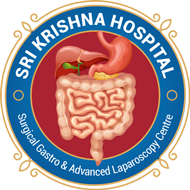What is Laparoscopic Splenectomy?
Laparoscopic splenectomy (LS) is the gold standard procedure to remove the spleen in elective patient, but remains a very delicate procedure due to fragility of parenchyma and capsule of the spleen and its close connections with stomach, pancreas and colon.
Why Laparoscopic Splenectomy is done?
Splenectomy is used to treat a wide variety of diseases and conditions.
Enlarged spleen. Splenectomy may be done to ease the symptoms of an enlarged spleen, which include pain and a feeling of fullness.
Blood disorder. Blood disorders that may be treated with splenectomy include idiopathic thrombocytopenic purpura, polycythemia vera and thalassemia. But splenectomy is typically performed only after other treatments have failed to reduce the symptoms of these disorders.
Cancer. Cancers that may be treated with splenectomy include chronic lymphocytic leukemia, Hodgkin's lymphoma, non-Hodgkin's lymphoma and hairy cell leukemia.
Infection. A severe infection or the development of a large collection of pus surrounded by inflammation (abscess) in your spleen may require spleen removal if it doesn't respond to other treatment.
Cyst or tumor. Noncancerous cysts or tumors inside the spleen may require splenectomy if they become large or are difficult to remove completely.
How Laparoscopic Splenectomy is done ?
Laparoscopic Splenectomy is doneunder general anesthesia. A cannula (hollow tube) is placed into the abdomen and abdomen will be inflated with carbon dioxide gas to create a space to operate. A laparoscope (a tiny telescope connected to a video camera) is put through one of the cannulas which projects a video picture of the internal organs and spleen on a television monitor. Several cannulas are placed in different locations on abdomen to allow to place instruments inside and remove spleen. A search for accessory (additional) spleens and then removal of these extra spleens will be done since 15% of people have small, extra spleens. After the spleen is cut from all that it is connected to, it is placed inside a special bag. The bag with the spleen inside is pulled up into one of the small, but largest incisions on your abdomen. The spleen is broken up into small pieces (morcelated) within the special bag and completely removed.
Post operative recovery
If you had laparoscopic surgery, you'll likely go home 2 days after surgery
Advantages of laproscopicSplenectomy
The laparoscopic procedure has several benefits:
- Less postoperative pain
- Shorter hospital stay
- Faster return to a regular, solid food diet
- Quicker return to normal activities
- Fewer incisional hernias





